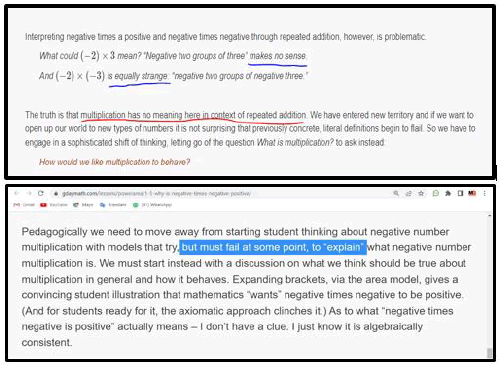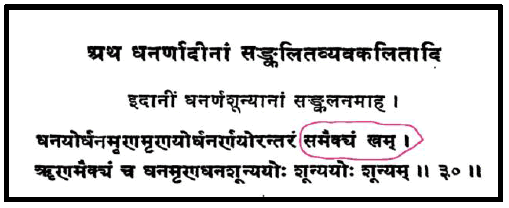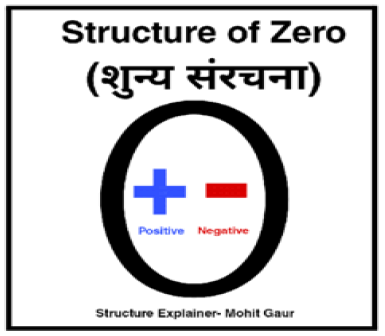Negative × negative in counting format
Received: 06-Mar-2023, Manuscript No. puljpam-23-6219; Editor assigned: 08-Mar-2023, Pre QC No. puljpam-23-6219 (PQ); Accepted Date: Jan 29, 2024; Reviewed: 11-Mar-2023 QC No. puljpam-23-6219 (Q); Revised: 15-Mar-2023, Manuscript No. puljpam-23-6219 (R); Published: 30-Nov-2024, DOI: 10.37532/2752-8081.24.8(1).01-04
Citation: Gaur M. Negative Ã?Â? negative in counting format. J Pure Appl Math. 2024; 8(6):01-04.
This open-access article is distributed under the terms of the Creative Commons Attribution Non-Commercial License (CC BY-NC) (http://creativecommons.org/licenses/by-nc/4.0/), which permits reuse, distribution and reproduction of the article, provided that the original work is properly cited and the reuse is restricted to noncommercial purposes. For commercial reuse, contact reprints@pulsus.com
Abstract
This research paper discusses the shortcomings of the currently prevalent definition of multiplication, and according to this paper, the definition of Multiplication is not complete and has many Errors as it does not apply to all types of examples such as negative×negative.
Rather, the new definition given by us applies well to all examples and also defines the multiplication of negative numbers more efficiently than the current definition. The correctness of this new definition means that we should not write 2*2 as 2+2 but in the new format.
Although in this example both definitions are correct, in the example of negative numbers, only the new definition works. Therefore, whether it is positive or negative, the same definition and format should be used which is more perfect because in mathematics a definition will be considered complete only if it works in all types of examples.
Key Words
Counting Format; Negative; Zero; Multiplication; Vedic period
Introduction
Is the definition of multiplication given by all accepted dictionaries of mathematics really accurate? Does it work in all types of instance .I think it's totally rotten when we multiply negative numbers. According to the mathematics of the vedic period, multiplication is somewhat different from modern mathematics. I found the real meaning of multiplication by doing deep research on brahmagupta's mathematics, vedic mathematics, rashi vigyan, jyotish and other ganit shastras. apart from this, we have also explained the correct definition of zero and its actual form which is mentioned in Indian Sanskrit texts. Through the real property and basic nature of zero, we have also given a new dimension to understanding the basics of negative and positive number's operation. the current definition of multiplication is not complete and has many errors as it does not apply to all types of examples such as negative*negative.
Current concept
In mathematics, a definition is used to give a precise meaning of a formula and any mathematical definition will be literally correct if we can deal with each example using only its words and understanding. And as far as multiplying means counting, then by using its definition all the problems should be put in the counting format. And in this sequence the definition of multiplication should be checked.
According to modern mathematics (oxford and cambridge dictionary)
Definition of multiplication:
To increase a number by the number of times mentioned.
I.e. 2×3 means increase 2 for 3 times.
Or
To add a number to itself a particular number of times.
I.e. 2×3 means Add 2 to itself 3 times.
Explanation
According to these definitions, multiplication is the only repetitive addition of a number nothing other than this. If this concept is perfect then it should be applied in all examples with all conditions.
Complication of this Concept
This concept is working everywhere except for negative numbers. See Examples:
Ex. 1
2×3=6
Try it in Definition format
2+2+2=6
It works here (2×3=2+2+2)
Ex. 2
(-2)×3=-6
Check it in Definition format
(-2)+(-2)+(-2)=-6
It works here so -2×3=(-2)+(-2)+(-2)
Ex. 3
(-2)×(-3) = +6 (we Know) Check it in definition format“negative two groups of negative three”. Makes no Sense.
• The main problem is how do you write it in an arithmetical format that also justifies your Definition of Multiplication
We can't describe it in repetitive addition format because how can we add -2 into itself for -3 times. As we can't assume negative times addition. Negative time’s addition is a mathematical impossibility because it is a self-contradiction.
And a math’s learning website (run by dr. james tanton) also claims that we cannot properly explain negative multiplication in the repetitive addition (current definition of multiply) Figure 1.
This website explains the failure of the current definition and proves algebraically that - × - = + but can't even put it into an equation as an arithmetic definition. Multiplying negative by negative is positive. This can be accomplished in many ways, even with simple thinking; but this in no way can be summed up in a formula using the current standard definition of multiplication. As we discussed, according to the definition of multiplication, it is the process of adding a number to itself a certain number of times. Therefore, it would not make sense to write a negative multiplied by a negative in a counting form. Negative times negative is a mathematical expression which cannot be expressed as an arithmetic format.
It means that the problem is in the definition and it needs to be universalized... because if the definition would be correct then from the very beginning, school children will be able to grasp the philosophy of multiplication very well.
Conclusion = "We can't Describe (- × -) in counting format; it cannot be expressed as an arithmetic format by using the current definition of multiplication".
New concept
According to Mr. Henry Burchard Fine (a Former professor of mathematics at princeton university) The modern method of multiplication is based on brahmgupta’s axioms. But I think Modern mathematics adopted the basics from ancient indian definitions but not faultlessly. I found the real meaning of multiplication by doing deep research on brahmgupta's maths & other vedic ganit shastras.
According to ancient Indian mathematics
Perfect Definition of Multiply
• To Add/Subtract a number to zero (0) for a particular number of times.
• To increase or decrease a number to zero (0) for a particular number of times.
Ex. 2×3 means Add 2 Times 2 in 0 (2×3=0+2+2+2 not 2+2+2) Explanation:-
• If the multiplier is +3 it means add 2 to 0 for 3 times.
• If the multiplier is -3 it means to subtract 2 to zero for 3 times.
It means we are doing a particular Action (add or subtract) with the main number in 0(zero) for mentioned number of times (Frequency).
So now we are going to check the new definition by different examples
Example.1
-2 × 2 = -4
Expand:-
0 + (-2) + (-2) = -4
So -2 × 2 = 0 + (-2)+ (-2)
Example. 2
2×2= 4
Expand:-
0+2+2= 4
So (2×2=0+2+2)
Example. 3
(-2)× (-2) = +4 (We know)
Expand:- Subtract -2 in 0 for 2 times
0 - (-2) - (-2) = + 4 (Proved)
So -2 × (-2) = 0 - (-2) - (-2) (Expandation is possible)
Now we can describe the neg. multiplication with definition.
Questions on new concept
This question still remains that -(- will give positive results, it should also be understood in arithmetic form. And why did we use zero and what is the contribution of zero in our new definition, if we find the answers to these 2 questions, then there will be no question left in this definition.
1. How 0 - (-) = (+) in our explanation?
2. And why do we Use 0 in Multiplication?
To find the answer of both questions, we need to know about the basics of zero.
What is Zero
According to ved, upnishads, and other sanskrit texts, zero (shunya) is the base of all numbers and it is not only a placeholder but also a foundation of all basics. Shunya also contains something (zero is not so-called 'nothing' in indian maths).
Ancient indian mathematicians and grammarians about zero
Maharshi Panini about zero (shunya)
Maharshi Panini's definition of Zero based on Sanskrit grammar:-  (adarshanam lopah - 1.1.60)
(adarshanam lopah - 1.1.60)
• Adarshanäm means = To be Invisible
• And lop is adarshnam (According to sage panini)
Note:- Lop is a synonym of zero or shunya
Explanation: According to the sutra, zero means something disappeared or become invisible it means something still exists inside zero but it’s invisible or disappeared. So we can say that zero is not identical to nothing but it behaves like nothing.
Panini explained this invisibility in sounds, words, and language terms but i see it also applies in maths, but actually what's hidden inside a zero? it's explained by an indian mathematician “brahmgupta”.
Brahmgupta about zero
Samaekyam = Equal positive and negative

Explanation: according to the definition, the sum of an equal positive and negative makes zero, or we can say that subtracting a number into itself makes zero. Example. (1-1=0) this sutra also describes that zero is neutral but it contains positive and negative charges in equal quantity (0=+, -)
• Om kham brahm - yajurved 40.17
• Samaikyam kham - brāhmasphuṭasiddhānta
• Adarshanam lopah – astadhyayi
0 = numbers in positive and negative version in equal quantity; by this angle we can say that zero contains positive and negative (in equal quantity).
According to the structure of 0, it contains + and - both in equality (and it's a fact that +1-1=0).
So now we are able to explain arithmetically that how 0-(-) become + in our example 3.
Zero's hidden role in multiplication
Now after knowing the true meaning of zero, it can be easily understood how our problem was solved by taking zero. and it will also become clear that what is the true meaning of positive and negative multiplication let us know the real meaning of increasing and decreasing from zero. :-
0+(Y) means add Y in 0
0-(Y) means subtract Y from 0
Than:-
• 0+(+) means = add (+) in 0 before this process 0 have "+" and "-" in equality, so if you add one more "+" than 0 lost his equality and become "+" dominated
• 0-(+) means = subtract the positive(+) into 0 and we will get negative dominated results so 0-(+) = negative (-)
• 0+(-) means = add the negative (-) into 0 and we will get negative results so 0+(-) = negative (-) (because now zero has more negatives than positives)
• 0-(-) means = subtract (-) into zero(0) gives positive before this process, zero has negative and positive both in equality, and we removed negative from zero so 0 becomes positive dominated.
(Because now 0 has more positives than negative when we removed some negative value. So it gives a positive answer)
Ex. - (-5) means 0-(-5)
And if we remove -5 from 0 which contains +5 and -5 both then it remains +5. So finally we write, 0-(-5)= 0+5.
 Here 0 means (+5,-5). And if we remove -5 from the given subset then it remains only +5* and this theory applies to every example and condition.
Here 0 means (+5,-5). And if we remove -5 from the given subset then it remains only +5* and this theory applies to every example and condition.
Declaration
Conflicts of interest/Competing interests: The author declares no conflict of interest.
Conclusions
In conclusion, the newly proposed definition presented in this research paper not only effectively applies to various examples but also offers a more efficient elucidation of the multiplication of negative numbers compared to the prevailing definition. Moreover, this study concludes to a comprehensive understanding of the inherent properties of positive and negative numbers, shedding light on the true essence of zero within numerical systems. Through rigorous analysis and empirical evidence, this paper reaffirms the fundamental principles governing numerical operations, enriching our comprehension of mathematical concepts and their Actual Philosophy.
So-
n*m = n+n+...+n ( m times) is not honorific perfect n*m = 0+n+n+...+n ( m times) is perfect
This study not only elucidates the proposed findings but also underscores their historical precedence, tracing back to the knowledge documented in ancient Indian texts. Through an examination of these ancient sources, we have unveiled a remarkable comparison between our contemporary understanding of zero, positive-negative numbers, and the insights gleaned from millennia-old Indian mathematical treatises. By bridging the gap between past wisdom and present scholarship, this research highlights the enduring relevance and timeless significance of mathematical principles, emphasizing the rich heritage that continues to inform and inspire modern scientific inquiry.
Source
1. Colin McIntosh, Cambridge Advanced Learner's Dictionary 4th Edition, Cambridge University Press,2013
2. Oxford Advanced Learners Dictionary - 10th Edition,Oxford University Press,2020
3. Braymguptacharya,Brāhmasphuṭasiddhānta VOL 4,Indian Institute of Astronomical and Sanskrit Research,1966
4. Fine, Henry B. (1907). The Number System of Algebra - Treated Theoretically and Historically (PDF) (2nd ed.). p. 90
5. Yajurveda Samhita,NAG Publisher,1990
6. Dr. K.D. Dwiwedi,Vedon main vigyan,vishwabharti anusandhan parishad, 2nd edition,2008
7. Acharya sripati,Siddhant shekhar,Chowkhamba Krishnadas Academy, Ed.2015
8. Maharshi Panini,Ashtadhyayi Sutra Path, RAM LAL KAPOOR, TRUST, Ed.2019
9. Maharshi Dayanand Saraswati, Astadhyayibhashyam,Vaidik Yantralay Ajmer,1927
10. Aryabhata,aryabhatiya,D.K.Print World LTD , 2015
11. Brahmagupta; Bhāskara II (1817). Algebra, with Arithmetic and Mensuration, from the Sanscrit of Brahmegupta and Bháscara. Translated by Henry Thomas Colebrooke. John Murray. p. 319
12. Plofker (2007, pp. 428–434






 In his text
In his text 



